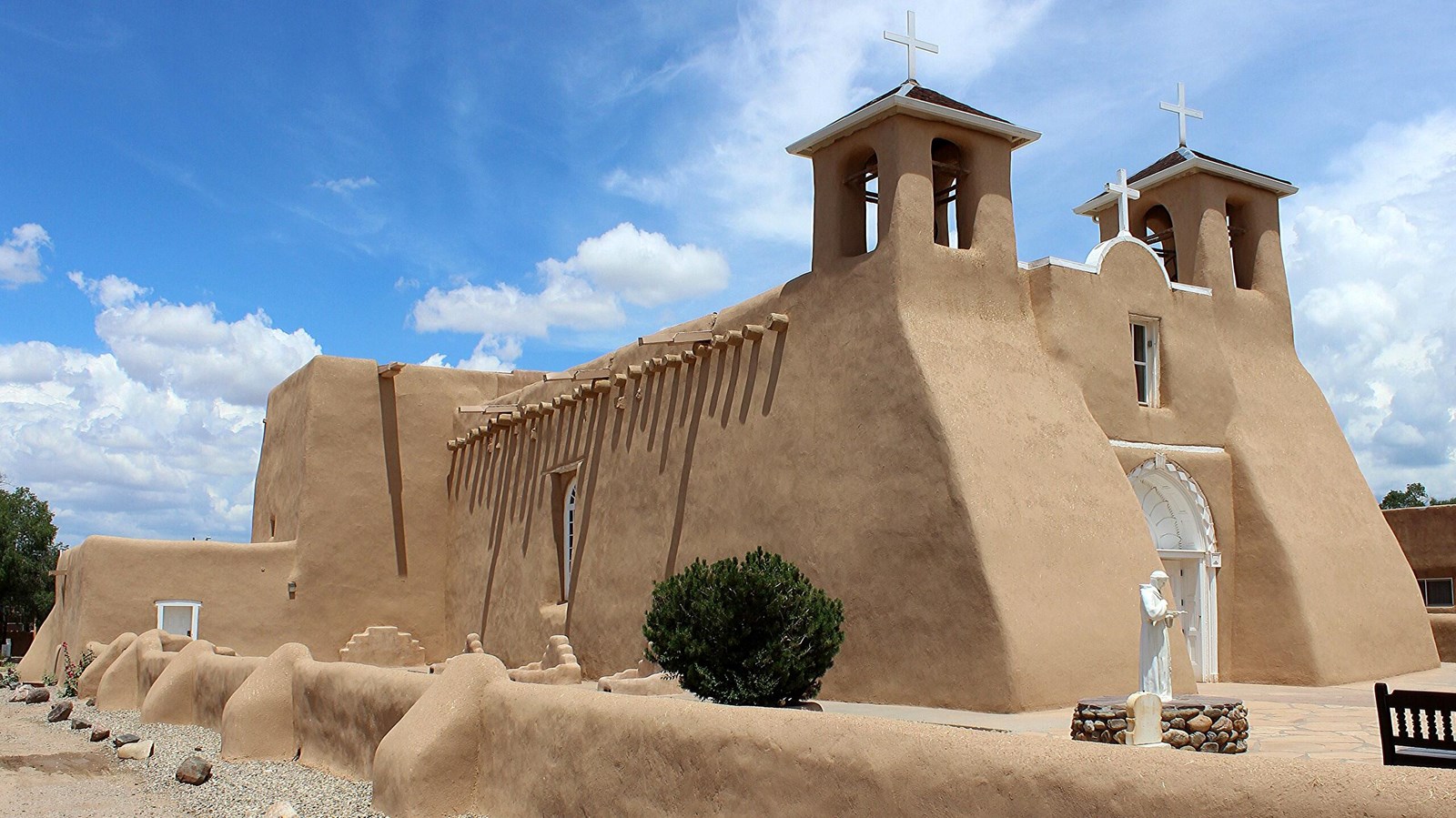Last updated: December 30, 2023
Place
San Francisco de Assisi Mission Church, Ranchos de Taos, New Mexico

Photo Courtesy of Travis Witt via Wikimedia
The Spanish colonists were well established in New Mexico by the 18th century, a period when Spain was at the height of its imperial power in North America. Around this time, Spanish and Mexican civilian families began to settle permanently in Ranchos de Taos, in northern New Mexico. By the mid-18th century, this Catholic agricultural village founded the San Francisco de Assisi Mission. The Franciscans supervised the construction of the historic church between 1772 and 1816. The Spanish Colonial San Francisco de Assisi Mission Church is a well-preserved adobe building in the center plaza of the Ranchos de Taos Historic District. It was designated as a National Historic Landmark in 1970, at the same time it was added to the National Register of Historic Places.
Completed in 1816, the San Francisco de Assisi Mission Church is a large, sculpted Spanish Colonial church with massive adobe buttresses and two front-facing bell towers. The architecture of the church is an impressive blend of native and Spanish styles. Three white crosses adorn the two towers and church entranceway. Four “beehive” shaped buttresses support the back of the church structure and two buttresses in front of each bell tower support the front. Inside the church, stairs lead to a choir loft above the entrance. The large sanctuary provides ample space for worshippers and visitors, and the altar is decorated with original Spanish woodworking and religious iconography. A thick adobe wall surrounds the church, cemetery, and forecourt.
Francisco de Assisi Mission Church remains an important center of community life and the citizens of Ranchos de Taos ensure it stays in good condition. During major restoration in 1967, workers applied a hard plaster to protect the exterior and prevent future damage and added a new roof. They also replaced the church doors with accurate replicas of the originals, and the vigas — wooden ceiling beams—and 60 percent of the corbels—decorative support structures -- with historically accurate reproductions. Despite this plaster being applied to protect the church, the hard plaster proved to be damaging to the building. Since this time, citizens of Ranchos de Taos, parish members, and visitors gather for two weeks each June to re-mud the exterior of the adobe church with a mixture of mud and straw.
Because of its imposing form and sculpted body, the church is a favorite subject for artists. Ansel Adams photographed the church for his Taos Pueblo art book and Georgia O’Keeffe painted a series of perspectives of the church. O’Keeffe once described it as “one of the most beautiful buildings left in the United States by the early Spaniards.” In most works, these artists favored the view of the back of the church, with its smoothly sculpted adobe beehive buttresses.
